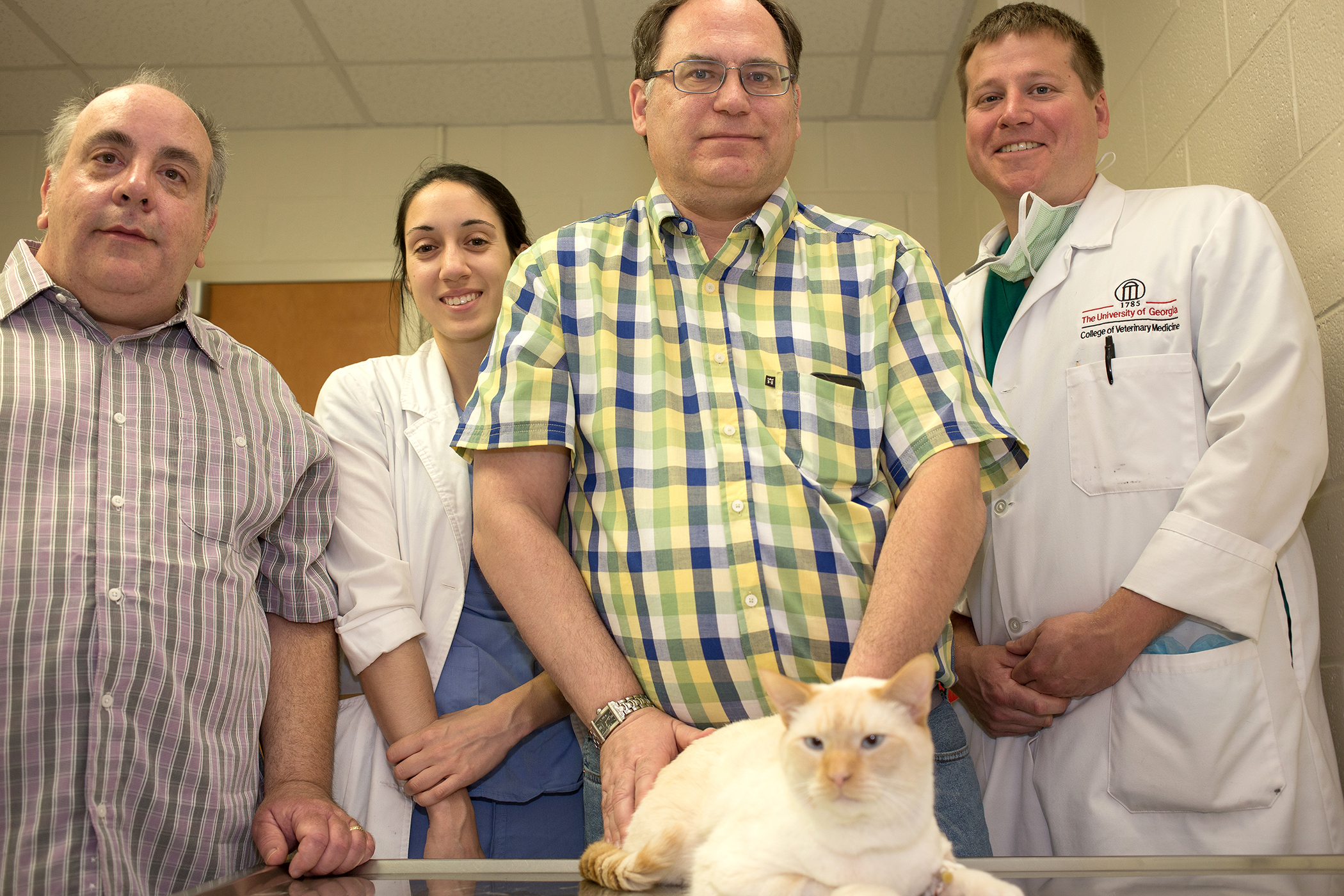Surgeons in UGA’s Veterinary Teaching Hospital successfully performed a kidney transplant in a domestic cat, using stem cells harvested from the patient to optimize the cat’s acceptance of the new kidney.
The surgery, performed in May, is the second successful feline kidney transplant using feline adult stem cells performed at the hospital.
“To the best of our knowledge, UGA is the only veterinary facility in the world to use adult stem cells in feline kidney transplantation,” said Dr. Chad Schmiedt, a board-certified small animal surgeon who heads UGA’s feline kidney transplant program.
The transplant patient, Arthur, is a nearly 4-year-old flame point Siamese male. The cat’s owners brought him from Virginia to undergo the procedure at UGA. Arthur was diagnosed with chronic renal failure about a year ago.
Two other veterinary teaching hospitals declined to perform Arthur’s surgery due to possible complications.
Cyclosporine is a drug that suppresses the immune system so that the donated organ is less likely to be rejected. Tests showed Arthur’s body did not absorb as much cyclosporine as desired. In his initial meeting with Arthur’s owners, Schmiedt suggested using feline adult stem cells, otherwise known as mesenchymal stem cells or MSCs, as part of Arthur’s immunosuppressive protocol.
“We used feline adult stem cells in one other transplant that we did last year,” said Schmiedt, who noted a growing body of studies detailing the successful use of adult stem cells in human renal transplants.
A study published in 2012 found the use of MSCs during renal transplant surgery in humans lowered the risk of acute organ rejection and decreased the risk of infection. The study also found patients had better estimated renal function one year after surgery.
The first cat to receive mesenchymal stem cells during a kidney transplant at UGA’s Veterinary Teaching Hospital in 2013 is still doing well.
“We closely follow all of our transplant cases and stay in touch with both the referring veterinarians as well as the owners for the life of the patient,” Schmiedt said.
Mesenchymal stem cells can be derived from fat, bone marrow and neonatal tissues such as placenta or umbilical cord. Schmiedt harvested fat cells from Arthur, and the UGA Regenerative Medicine Service grew the stem cells from the fat sample prior to Arthur’s surgery.
The service laboratory is managed by research professionals Merrilee Thoresen and Jenny Mumaw, who is enrolled in the college’s doctor of veterinary medicine program and will graduate in 2016. The service is headed by Dr. John Peroni, a board-certified large animal surgeon and associate professor whose research focus includes stem cell therapeutics.
Arthur’s transplant surgery was conducted May 15. The renal transplant process involves two surgeries: one to harvest a kidney from the donor cat and the other to transplant the donated kidney into the recipient. Each surgery is a two- to three-hour procedure, Schmiedt said.
Arthur’s new kidney was donated by a cat named Joey, who had been part of a research program in the College of Veterinary Medicine. The feline transplant program at the UGA Veterinary Teaching Hospital requires that the donor cat be adopted by the recipient cat’s family-so Joey and Arthur will become lifelong playmates.
Joey’s new owners have contacted the teaching hospital’s Behavior Medicine Service for advice on helping Joey transition to his new home. Arthur will continue to receive stem cell treatments. His initial treatment was given during the transplant surgery, and additional stem cells will be shipped to Arthur’s veterinarian, who will then give repeated doses to him.
“Cat owners who seek kidney transplants for their sick cats have to be very dedicated,” Schmiedt said. “They will give their cat medication twice a day for the rest of its life. They also must be willing to take their cats to the veterinarian for frequent medical checkups. A significant amount of time and expense is involved in keeping the recipient and donor cats healthy. But cat lovers who will go to this extent typically are willing to extend this kind of care to all cats they own.”


